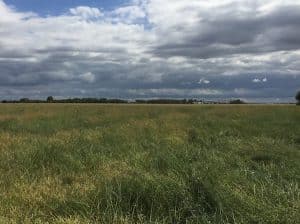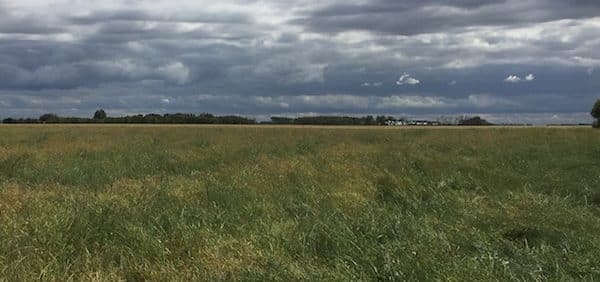Pre-harvest is a good time to dry down weeds to make straight combining go more smoothly. A pre-harvest application can also provide some weed control on late growing weeds — but is often too late to stop seed production.

Suspicious patches. When scouting fields for pre-harvest herbicide, look for patches that could be herbicide resistant. Identifying patches can limit the potential spread of weeds through the field and farm. Collect seed samples from those patches for testing over the winter. Labs need weed seeds to do herbicide resistant tests. Tests cannot be done on live plant samples. Remember labs conduct testing on a first come first serve basis as much as possible, so make sure to submit early. For large seeded weeds (i.e. wild oat) a large coffee can (approximately 0.75 to 1 kg) is needed per subgroup (Group 1 dim) and for small seeded weeds about 0.5 to 1 cup of seed is needed for testing. Make sure the sample is dry and free of debris.
Fall regrowth. Post harvest weed timing is often most effective, and recommended as a good weed management strategy in many cases, especially for low growing weeds that are deep in the canopy and may be missed by a pre-harvest treatment.
Fall is a good time to control perennial and winter annual weeds, but wait approximately four to six weeks after harvest for enough regrowth to offer a good target for herbicide and make sure that glyphosate rates are adequate for the target weed. Keep in mind that post-harvest control of perennials requires roughly three times the rate of pre-harvest applications to get the same amount of herbicide in the plant root.
Fall timing.
—Perennials are best controlled in early fall prior to a killing frost. Use of glyphosate requires warm temperatures, bright sunlight and a recovery period of roughly 48 hours with temperatures above 4 degrees at night and 13C daytime minimums after a frost to be effective.
—October is usually the best time to control winter annuals such as narrow-leaved hawk’s-beard, stork’s-bill, annual sow thistle (common and spiny) and cleavers. That way you get all that have emerged.
Strange weeds. Always be on the lookout for unusual weeds. Alberta Agriculture has a few reports of jimsonweed this year, all from fields that had the weed in 2015. This is likely due to self seeding. Alberta Agriculture weed specialists ask growers to remove and destroy all plants when found.
Further reading:
